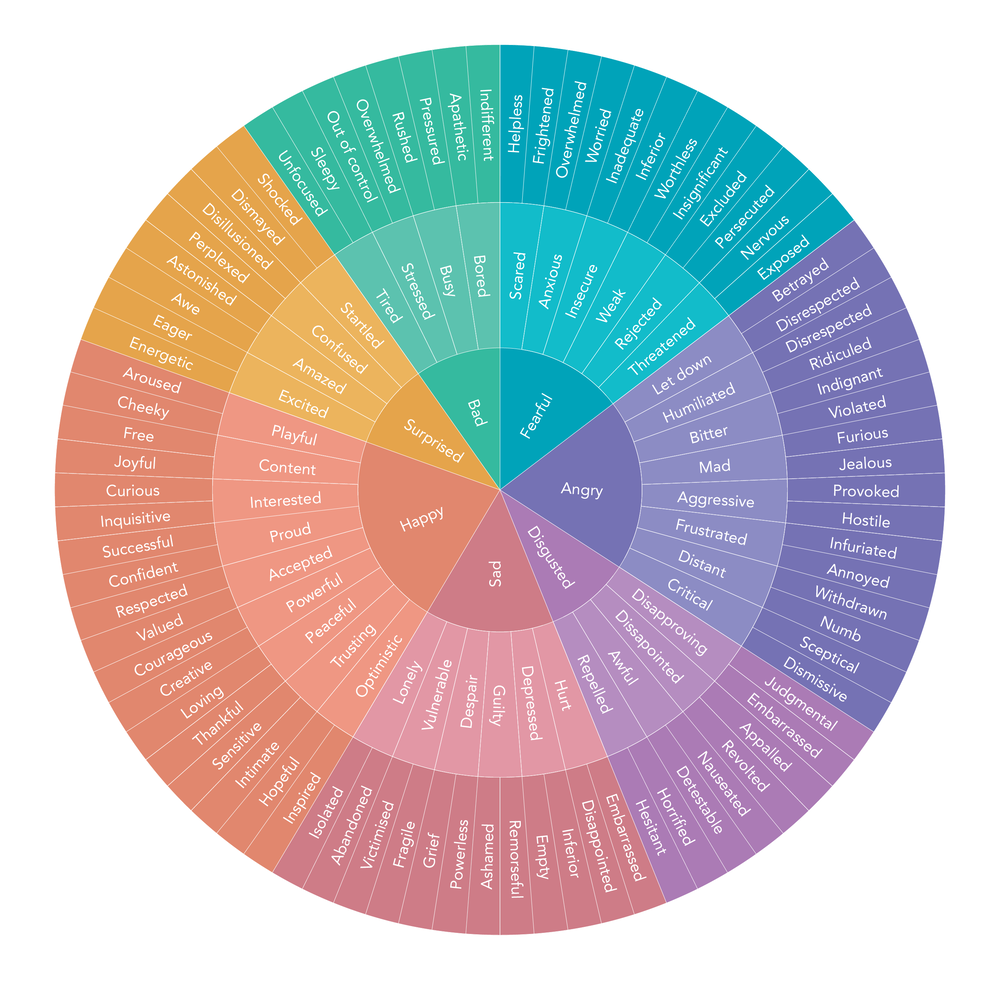Permission to feel: the key to unlocking our potential?

I’ve dedicated most of this weekend tucking into Marc Brackett’s Permission to Feel. I’ve wondered how much wisdom was lurking in those untouched pages and now I’m out the other side I feel satiated, motivated and equipped to deal with emotions more effectively. Not bad for 48 hours!
There’s plenty to dig into in the 241 pages. Brackett’s passion for working with children and young adults is clear from the outset making it relevant for parents, for educators, and for those working with in other contexts with young people. For those who have heard about ’emotional intelligence’ but perhaps like me never quite got around to reading the seminal book by Daniel Goleman, Brackett offers us context, updated data and research and what felt vital to me – a set of tools to start applying it today.
The book is in 3 parts:
- Why do we need permission to feel? What emotions can tell us and how to approach emotions with curiosity
- The toolkit: RULER
- The so what: applying this practice in the home, in schools and in the workplace.
Why do we need permission to feel? What emotions can tell us and how to approach emotions with curiosity.
Bracket starts provocatively by asking the reader how we feel. How many times are we asked this question? How much social etiquette is laced with only providing a snappy answer to describe our inner world? Brackett provokes further, “Today when nearly every question can be instantly answered by Siri, Google or Alexa we’re losing the habit of pausing to look inwards, or to one another for answers.”
The consequence of ignoring the answer to this question is that “our inner lives are uncharted territory even to us, a risky place to explore.” And the cost is high, “If we don’t express our emotions, they pile up like a debt that will eventually come due.”
Brackett fills the pages with psychology experiments and public health research that shows negative unchecked emotion increases the likelihood of negative behaviours, which negatively impact our health. A very individual feedback loop that reinforces further negative emotion.
Even when it’s not severe enough to impact our physical health, inability to navigate our emotions can impinge on our creativity and imagination (tying in nicely to the ideas from Rob Hopkins, From What Is To What If).
As we’re a social species, our emotions affect other people. Our emotions are contagious – the technical term is emotion contagion – but we’ve all experienced it. If you’ve been feeling a bit low and you speak with a friend who’s upbeat, have you noticed that sometimes after the conversation you’re feeling a bit more energised too? If you zoom even further out, school and work environments where the majority of the emotions are experienced – according to the raft of research Brackett pulls on – are negative. What impact does that have on society? And what is that teaching the next generation?
So What Is An Emotion?
Brackett describes it as a piece of information. “They’re like news reports from inside our psyches, sending messages about what’s going on inside the unique person that is each of us in response to whatever internal or external events we’re experiencing.”
He provides some helpful definitions:
An emotion – happy, sad, angry – arises from an appraisal [interpretation] of an internal or external stimulus. Usually short-lived, usually include a physiological reaction, often expressed automatically in our facial expressions or body language.
A feeling is our internal response to an emotion: I’m angry about something that’s happening between us, it’s caused me to give up hope, and I can’t keep going this way. That’s a feeling. It’s nuanced, subtle, multidimensional.
A meta-emotion is an emotion about an emotion. I could be afraid of public speaking and embarrassed that I’m afraid.
A mood is more diffuse and less intense than an emotion or a feeling but longer lasting. Most typically, we don’t quite know why we’re feeling the way we are during a mood. The aftermath of an emotion
Become an Emotion Scientist
Since we’re “feeling beings” constantly experiencing emotions and feelings we need skills to deal with them. These are not skills we are born with. Brackett powerfully expresses the paradox in our development, “As we acquire the power to express our emotions [as a child], we are also developing the ability (and the desire) to hide them.”
The call to action of this book is to become an Emotion Scientist, to embody non-judgemental enquiry to understand our emotions and others.
But beware the emotion judge: “Where emotion scientists operate with open minds and good intentions, emotion judges are afraid of hearing something dreadful. They come prepared to deny, defend and blame.”
For example, Brackett encourages readers to enquire what type of emotion are we experiencing? Integral or incidental?
Integral emotions are directly caused by the action at hand – we’re fearful while climbing a tricky mountain path. All completely understandable and connected to the moment. Incidental emotions have nothing to do with what’s going on – our lingering feelings of frustration and anger influence when we drive to work or interact with colleagues at the office. These are the emotions that infiltrate our thinking without us being aware.
The invitation is to give permission for you and those around you to feel.
And there’s a toolkit to help.
Introducing RULER
Building on the wealth of research since the 1980s when the concept of Emotional Intelligence was validated, Brackett and his team at the Yale Center for Emotional Intelligence have developed the RULER method for emotion skills:
- Recognise
- Understand
- Label
- Expressing
- Regulate
Recognise
Awareness is the first step, and here Brackett introduces the 4 quadrants of the Mood Meter, as a first step to recognising roughly what we or others might be experiencing. So much of our communication is non-verbal, so we need to assess all the cues available to us.
“Unfortunately, it’s not foolproof. There are many ways to misunderstand what’s right before our eyes and ears.” And the more time we spend on screens the less practice we get at reading facial expressions. It makes me wonder what the consequences of extended lockdown will be?
Understand
Here Brackett implores us to see beyond the behaviour and try and get to the root of the emotion.
Here are some questions to start a line of enquiry for yourself:
- What just happened? What was I doing before this happened?
- What might have caused my feeling or reaction?
- What happened this morning, or last night, that might be involved with this?
- What has happened before with this person that might be connected?
- What memories do I have about this situation?
With someone else:
- What usually makes you feel this way?
- What’s going on that you’re feeling this way?
- What do you need right now? What can I do to support you?
Can we refrain from judgement here? “It’s the listener’s job to remain calm and try to hear the words that aren’t being said – yet.”
Labelling
“When you name it you can tame it.”
Brackett shares research that simply naming the emotion we are feeling can lessen its intensity. The aim here in this stage is to work towards emotion granularity and building up a rich emotion vocabulary, understanding the nuance.
Some useful definitions are shared here:
Jealousy is the fear of losing someone vs envy which is wanting something you don’t have.
Stress is “the response to too many demands and not enough resources to meet them” vs pressure, which is “the situation in which you perceive that something at stake is dependent on the outcome of your performance.”
Joy feels energetic and “is caused by a sense of getting what one wants” vs contentment which feels calm and is caused by a sense of completeness.
When we can hone in more precisely what we are feeling it enables the following:
- It legitimises and organises our experiences
- It helps others to meet our needs
- It helps us to meet the needs of others
- It connects us to the rest of the world, our emotions become a form of communication.
The onus is on us to do the work here. Brackett sums it up, “the ability to accurately label our feelings cuts the rest of the world a break.”
Expressing
Now for the hard work. Once you’ve worked out what you’re feeling and why, it’s often helpful to express it. Even if it’s just to ourselves in our journal: this can provide therapeutic benefits as many free-writers will attest to.
But it’s harder to express our feelings to someone else – there’s a balance to be struck; “on the one hand, it’s important to be honest and forthcoming. On the other, we need to take the possible consequences of our honesty into account. Expressing emotions is like a transaction between people. You express and I react.”
We can all recall times when this has gone badly but Brackett suggests we keep practicing because, “the currency of relationships is emotional expression.”
There are many power dynamics, cultural norms, group norms, gender bias, societal expectations to navigate when expressing our emotions.
Expressing (and even hiding) our emotions take work.
When someone is trying to express their emotion to us, we can practice being non judgemental and attentive with our words and our body language. As Brackett points out, “we all know how much it hurts to have someone refuse to pay attention.”
Zooming out to the societal level Brackett theorises that “many of the worst injustices in contemporary life revolve around the inability of the powerless to express their fear and outrage at inhumane treatment by abusers.”
That’s something to think about, especially when the benefits of expressing our emotions are:
- significant drop in physician visits
- increases in immune function
- lower blood pressure
- long-term improvement in mood
- reduction in stress
Regulate
This is the action part of the RULER toolkit. What are we going to do about the emotions we are experiencing? Brackett reminds us this is the hardest emotion skill to master. In part because “every emotional response is a unique experience. What triggers an unpleasant emotion today may not even register tomorrow.”
The strategies to manage our behavioural response are infinite and often specific to the situation we’re in – for example with others we might co-regulate. We might regulate our mood to soothe the friend in anguish, or a frightened child.
But here’s an important point to note: “Too often we look for strategies that will shift people out of negative emotion spaces but that’s not always possible. During difficult times, sometimes we just need to be there for one another.”
Brackett elaborates on 5 main types of strategies:
- Mindful breathing – he reflects on a beautiful quote by Justin Bariso: “Pausing helps you refrain from making a permanent decision based on a temporary emotion.”
- Forward looking strategies – knowing what will “set us off, or bring us joy and why”, predicting certain outcomes and preventing that outcome.
- Attention-shifting strategies: “we can temper the emotion we are feeling by diverting our attention.” Many of us will be familiar with these – it can be as simple as looking away, procrastinating, binge-watching Netflix rather than face the feeling. But Brackett points out we can also use our self-talk here; being compassionate with ourselves can act as a powerful emotion regulation.
- Cognitive-reframing strategies: “a way to reimagine or re-frame whatever is triggering an emotional experience and then react instead to that new interpretation.” Here is where being generous in our assumptions about other people’s behaviour or intentions fit. Research has shown this strategy “significantly dampens the amygdala, an area of our brain that becomes activated when we experience strong emotions.”
- Meta-Moment – proclaimed as “the pinnacle of emotion regulation” – pausing and considering “How have I handled situations like this in the past? Or “What would my best self do right now?” Why does this work? “Visualising our best self redirects our attention away from the trigger and toward our values.” From there we can choose the most appropriate regulation strategy and act.
Applying the RULER
Brackett switches tact for part 3 of the book, looking at practical applications of the RULER in families, in schools and in the workplace. Time and time again he comes up against resistance to this work: it’s something for subordinates to do, not leaders; students need to do, not teachers; children need to do, not adults.
As with so much in life the trick is not to be disheartened when we fail but to be kind with ourselves and keep practicing. Brackett is a testament to that – he is bringing about systemic changes in education and the workplace all over the world.
In a world of work where many types of jobs will become automated our ability to be emotionally intelligent may well be the difference between a thriving career or not. Being successful or not. Being fulfilled or not.
Brackett calls for an emotion revolution: “with emotion skills we will create a more inclusive, compassionate and innovative world.”
That sounds like a world I’d like to be in.
Owning your story
In various ways I’ve been exploring what it means to own your story, from Brene Brown’s motivating quote: “When we deny the story, it defines us. When we own the story, we can write a brave new ending” story being the oldest form of learning there is; and from Climate Outreach’s research that it is also a powerful form of communicating difficult topics. But nowhere have I seen it more powerfully used than by Marc Brackett. He is open about the childhood sexual abuse he experienced by a family friend, the bullying he was victim to at school and the key role his Uncle Marvin played in giving him those early emotion tools that saved him. It’s this narrative throughout the book PLUS the wealth of scientific research that makes this book accessible, memorable and even achievable.
If a guy who has experienced so much pain can dedicate his life to developing tools for others to manage their emotions, surely there must be something in it?
And so… what to do with this new knowledge?
This book and its wisdom is primed and ready to put into action.
- Start by downloading the Mood Meter app and begin recognising and plotting your emotions. You can add detail about why you’re experiencing x and start to notice your own patterns. You can also share 48 hours of your emotion data with someone you know
- Learn the vocabulary. Can you articulate the difference between peaceful and tranquil for example? How many emotions can you name? How many do you express regularly? I’m going to purchase a copy of The Book of Human Emotions, because I resisted buying it when I saw it years ago and because I want to nerd out on this, but other tools are available, such as Dr Gloria Wilcox’s Wheel of Emotion that I’ve been referring to regularly these late few months (thanks to Naira for pointing this out)

- Listen to Marc Brackett on Brene Brown’s podcast, Unlocking Us. Dr. Marc Brackett and Brené on “Permission to Feel” | Brené Brown
For me?
I’m starting to plot my emotions down and I am determined to practice expressing them in more detail, particularly with my partner. I have been one of the “I’m always fine” type folks, so there’s plenty of unlearning to do.
And I want to think about how I can embed some of these practices with part of my growing team.
Want to get your hands on the book?
I love the aims of Bookshop.org and their “design to distribute” model of their affiliate scheme. I earn 10% of each sale I generate through this link.






